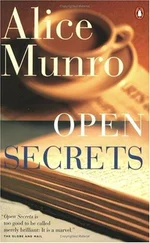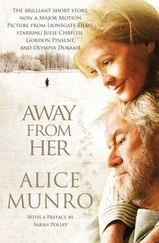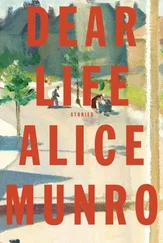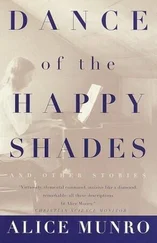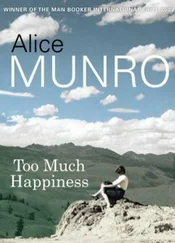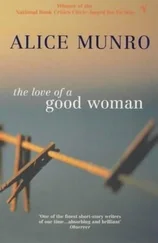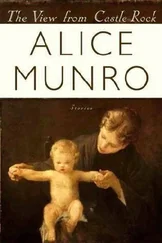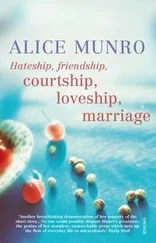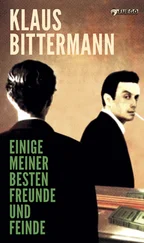ALICE MUNRO’S BEST
SELECTED STORIES
With an Introduction by Margaret Atwood
INTRODUCTION

Alice Munro is among the major writers of English fiction of our time. She’s been accorded armfuls of super-superlatives by critics in both North America and the United Kingdom, she’s won many awards, and she has a devoted international readership. Among writers themselves, her name is spoken in hushed tones. Most recently she’s been used as a stick to flog the enemy with, in various inter-writerly combats. “You call this writing?” the floggers say, in effect. “Alice Munro! Now that’s writing!” She’s the kind of writer about whom it is often said—no matter how well-known she becomes—that she ought to be better known.
None of this happened overnight. Alice Munro has been writing since the 1960s, and her first collection— Dance of the Happy Shades —appeared in 1968. To date she has published eleven collections, averaging nine or ten stories each. Though her fiction has been a regular feature of The New Yorker since the 1970s, her recent elevation to international literary sainthood took as long as it did partly because of the form in which she writes. She is a writer of stories—“short stories,” as they used to be called, or “short fiction,” which is now more common. Though many American and British and Canadian writers of the first rank have practised this form, there is still a widespread but false tendency to equate length with importance.
Thus Alice Munro has been among those writers subject to periodic rediscovery, at least outside Canada. It’s as if she jumps out of a cake— Surprise! —and then has to jump out of it again, and then again. Readers don’t see her name in lights on every billboard. They come across her as if by accident or fate, and are drawn in, and then there is an outbreak of wonder and excitement, and incredulity— Where did Alice Munro come from? Why didn’t anybody tell me? How can such excellence have sprung from nowhere? But Alice Munro did not spring from nowhere. She sprang—though it’s a verb her characters would find overly sprightly, and indeed pretentious—from Huron County, in south-western Ontario.
Ontario is the large province of Canada that stretches from the Ottawa River to the western end of Lake Superior. This is a huge and varied space, but south-western Ontario is a distinct part of it. It was named Sowesto by the painter Greg Curnoe, a name that has stuck. Curnoe’s view was that Sowesto was an area of considerable interest, but also of considerable psychic murkiness and oddity, a view shared by many. Robertson Davies, also from Sowesto, used to say, “I know the dark folkways of my people,” and Alice Munro knows them, too. You are likely to run into quite a few signs in Sowesto wheat fields telling you to be prepared to meet your God, or else your doom—felt to be much the same thing.
Lake Huron lies at the western edge of Sowesto, Lake Erie to the south. The country is mostly flat farmland, cut by several wide, winding rivers prone to flooding, and on the rivers—because of the available boat transport, and the power provided by water-driven mills—a number of smaller and larger towns grew up in the nineteenth century. Each has its red-brick town hall (usually with a tower), each its post-office building and its handful of churches of various denominations, each its main street and its residential section of gracious homes, and its other residential section on the wrong side of the tracks. Each has its families with long memories and stashes of bones in the closets.
Sowesto contains the site of the famous Donnelly Massacre of the nineteenth century, when a large family was slaughtered and their home burnt as a result of political resentments carried over from Ireland. Lush nature, repressed emotions, respectable fronts, hidden sexual excesses, outbreaks of violence, lurid crimes, long-held grudges, strange rumours—none are ever far away in Munro’s Sowesto, partly because all have been provided by the real life of the region itself.
Oddly enough, a number of writers have come from Sowesto. Oddly, because when Alice Munro was growing up in the 1930s and ′40s, the idea of a person from Canada—but especially one from small-town south-western Ontario—thinking they could be a writer to be taken seriously in the world at large was laughable. Even by the ′50s and ′60s there were very few publishers in Canada, and these were mostly textbook publishers who imported whatever so-called literature was to be had from England and the United States. There might be some amateur theatre—high-school performances, Little Theatre groups. There was, however, the radio, and in the ′60s Alice Munro got her start through a CBC programme called Anthology , produced by Robert Weaver.
But very few Canadian writers of any sort were known to an international readership, and it was taken for granted that if you had hankerings of that kind—hankerings about which you would of course feel defensive and ashamed, because art was not something a grown-up morally credible person would fool around with—it would be best for you if you left the country. Everyone knew that writing was not a thing you could ever expect to make your living at.
It might be marginally acceptable to dabble around the edges of water-colour painting or poetry if you were a certain kind of man, described by Munro in “The Turkey Season”: “There were homosexuals in town, and we knew who they were: an elegant, light-voiced, wavy-haired paperhanger who called himself an interior decorator; the minister’s widow’s fat, spoiled only son, who went so far as to enter baking contests and had crocheted a tablecloth; a hypochondriacal church organist and music teacher who kept the choir and his pupils in line with screaming tantrums.” Or you could do art as a hobby, if you were a woman with time on your hands, or you could scrape out a living at some poorly paid quasi-artistic job. Munro’s stories are sprinkled with women like this. They go in for piano-playing, or write chatty newspaper columns. Or—more tragically—they have a real though small talent, like Almeda Roth in “Meneseteung,” but there is no context for them. Almeda produces one volume of minor verse, published in 1873, called Offerings:
The local paper, the Vidette , referred to her as “our poetess.” There seems to be a mixture of respect and contempt, both for her calling and for her sex—or for their predictable conjuncture.
At the beginning of the story Almeda is a maiden lady whose family has died. She lives alone, preserves her good name, and does charitable works. But by the end, the dammed-up river of art has overflowed—helped on by hefty doses of laudanum-laced painkiller—and it sweeps her rational self away:
Poems, even. Yes, again, poems. Or one poem. Isn’t that the idea—one very great poem that will contain everything and, oh, that will make all the other poems, the poems she has written, inconsequential, mere trial and error, mere rags?… The name of the poem is the name of the river. No, in fact it is the river, the Meneseteung… Almeda looks deep, deep into the river of her mind and into the tablecloth, and she sees the crocheted roses floating.
This seemed to be the fate of an artist—of necessity, a minor artist—in the small Sowesto towns of yore: silence enforced by the need for respectability, or else an eccentricity verging on madness.
If you moved to a larger Canadian city, you might at least find a few others of your ilk, but in the small towns of Sowesto you’d be on your own. Nevertheless, John Kenneth Galbraith, Robertson Davies, Marian Engel, Graeme Gibson, and James Reaney all came out of Sowesto; and Alice Munro herself—after a spell on the west coast—moved back there, and lives at present not far from Wingham, the prototype of the various Jubilees and Walleys and Dalgleishes and Hanrattys in her stories.
Читать дальше
